My adventures in Bhutan continued on the morning of my sixth day in the country’s capital city, Thimphu. Join me as I dive even further into the world of crazy spicy Bhutanese food and go on a Buddhist monastery hike in Thimphu, Bhutan!
My day began at Typical Bhutanese Restro & Bar in Thimphu’s Hongkong Market to have a traditional, local breakfast. It was located in the center of the city, about a three-minute walk from my hotel, the Pedling Hotel & Spa. I had an action-packed morning ahead of me and I couldn’t wait to get started!
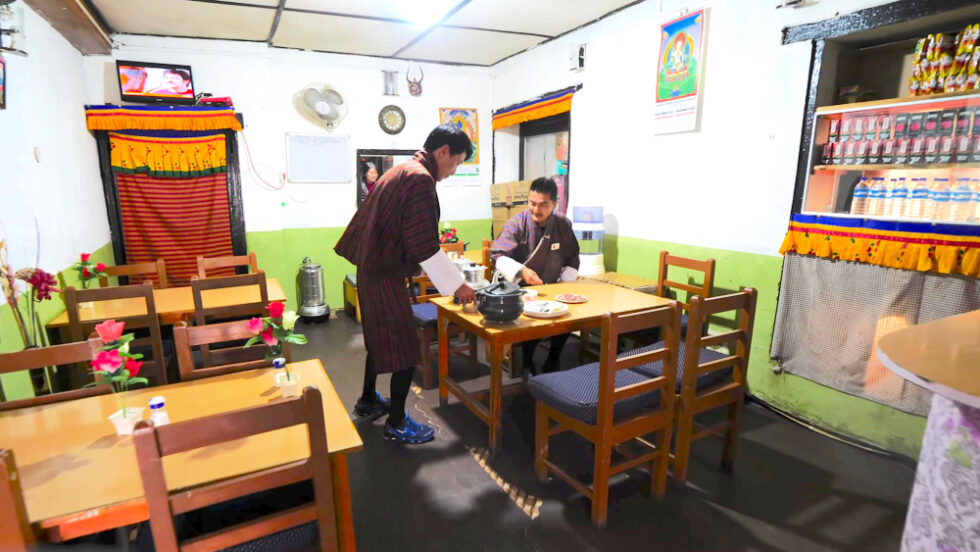
I met up with my guide from MyBhutan, Tsheten, and entered the small and cozy restaurant. It only has four tables and a bar area where you can buy locally-produced beer, whiskey, and brandy.
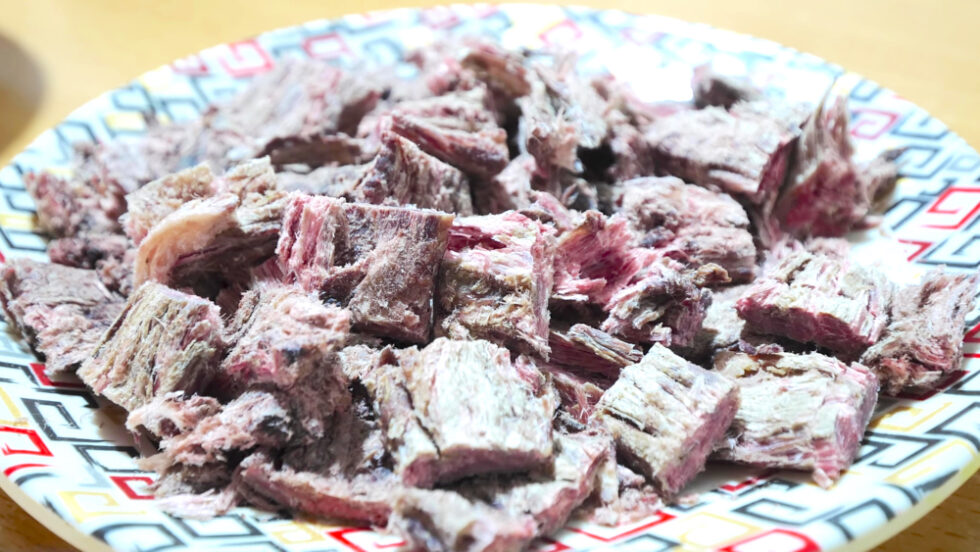
On the table, I could see some ezay (spicy chili salsa), dried beef, rice, scrambled eggs, and ngaja (milk tea). The dried beef was tough but really nice. I also liked the rice with chilies, which was super spicy! I used the milk tea to calm down the heat. I like it a lot more than the suja, which is traditional butter tea.

The rice, ezay, and egg was great together. The eggs were weird but oily and the heat from the ezay really hit me hard. It was the spiciest ezay I’d had in Bhutan so far and made my nose run! I really needed the rice to cool it down. The trick to getting through the beef is letting it sit in your mouth and letting it soak up your saliva to soften it up. The ezay was hot but I couldn’t get enough of it!
Then I got more eggs, which were still oily but more like regular scrambled eggs. I liked them better than the first ones I had! With the ezay, beef, and rice, it was like a Bhutanese scramble! I learned that rice with ezay with suja is a typical breakfast. They only have the dried beef and fried egg sometimes. It was a super-hot breakfast! It was both spicy and numbing! It was also filling because of the rice. But the best thing to combat the heat was the ngaja!

Then, we packed up some food from the restaurant to have for lunch later, and left to go on our hike to Chagri Dorjeden Monastery! I couldn’t wait to have some ema dashti later! Thimphu was waking up now and getting busier now that it was an 9 a.m. The shops were opening up.
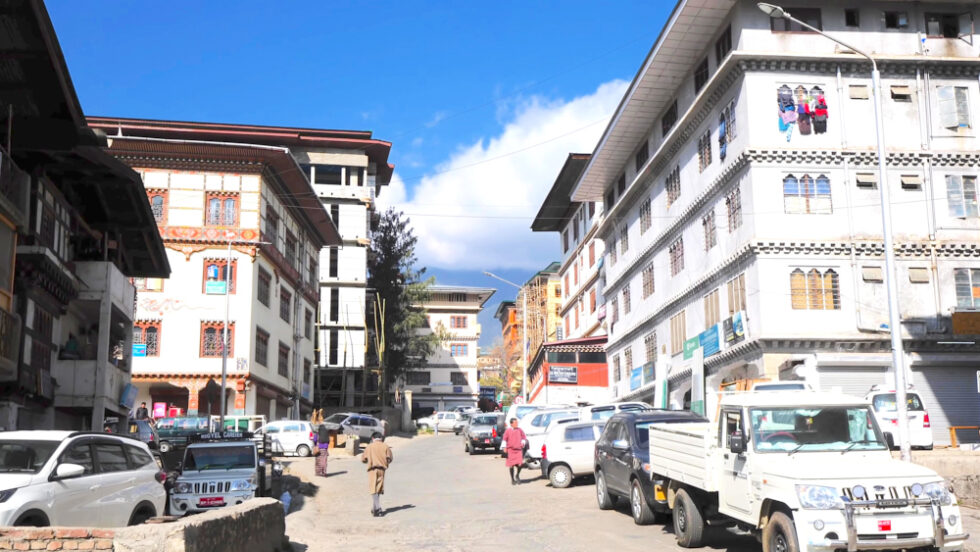
Our driver, Nidup grabbed our food and then we set off thirty minutes north of the city. The downtown area is made up of only 2 or 3 main streets, so it’s quick to pass through the city. From there, we’d cross a bridge, turn left, and then head north. Past the monastery we’d hike to, the road continues, unpaved, for another 5.6 kilometers before it ends in the Jigme Dorji National Park. There are no roads to Tibet.
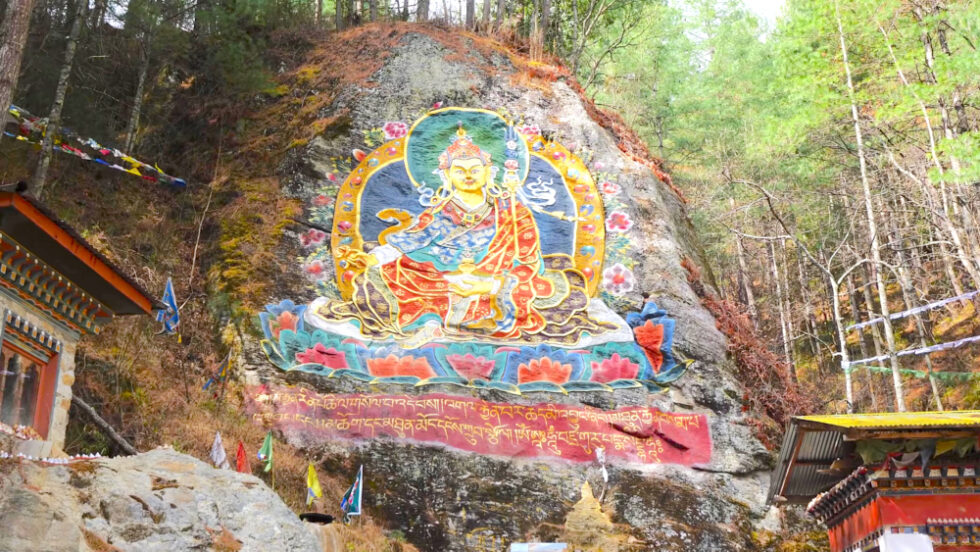
The road continued into the mountain forests. We stopped along the way to see a huge, beautiful, colorful Buddha that was painted on the side of a huge rock. I’d never seen anything like it. The rock was carved and then painted. Under it is a water prayer wheel. The river here flows into Thimphu and becomes the Wangchu River.
As we continued, we passed a university for monks, which had a really big campus. We continued on and saw a huge monastery made of several buildings on the side of a mountain ahead. It looked like a village, it was so big! We’d have to hike up the mountain to get to the monastery. It was built in 1620 by the Unifier, Ngawang Namgyal, and was the first monastery built in Bhutan. He created the same monastic school in 1623.
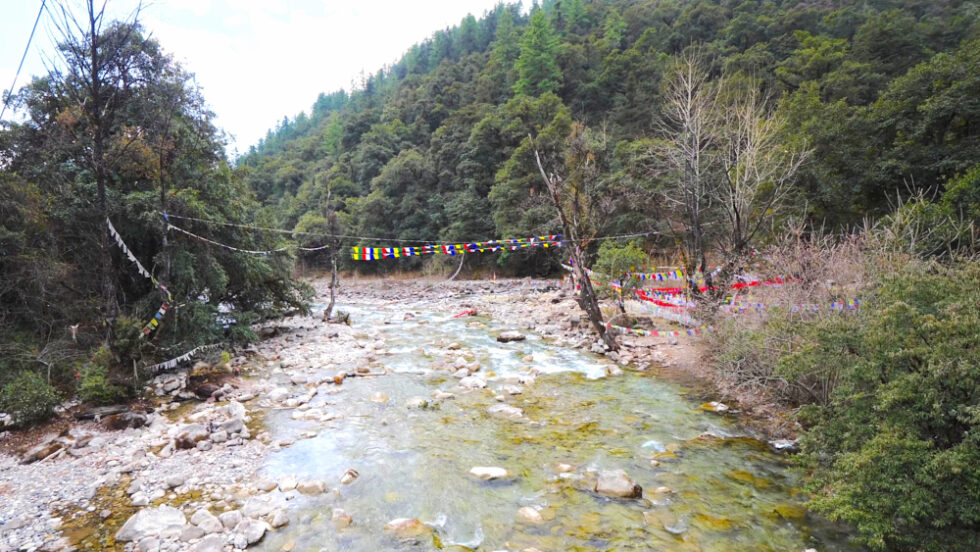
This area is part of Jigme Dorji National Park. It’s called the Valley of Tigers! We crossed a beautiful wooded bridge to cross the river. It was so peaceful and much colder there. We approached a temple with 108 prayer wheels. Then, our hike began up the mountain!
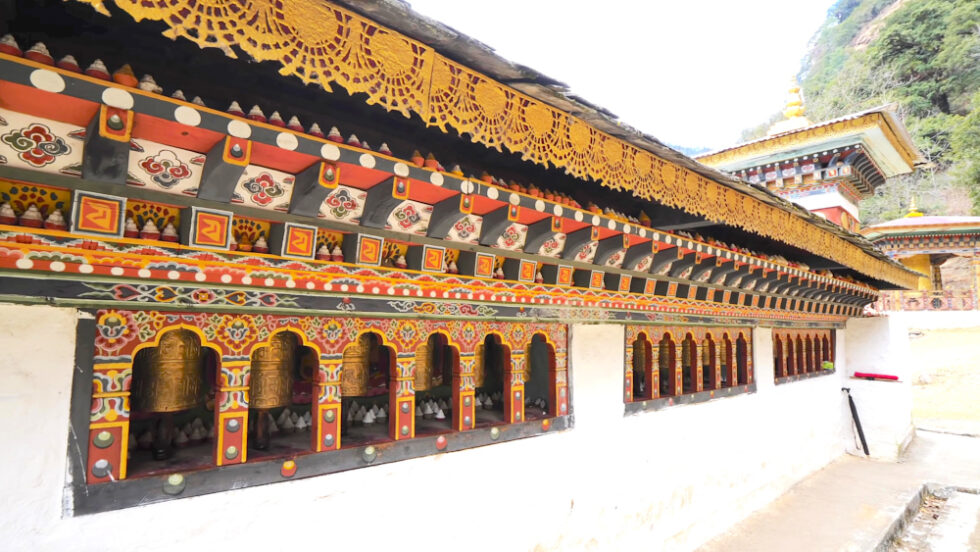
I was already getting tired. This hike was no joke! The hike to the Chagri Dorjeden Monastery would take an hour, but Tiger’s Nest is just as intense but takes 2.5 hours! It was hard for me, but Tsheten said this was a piece of cake and that there are much harder hikes in the country! The path was really rocky with lots of holes, dirt, and leaves strewn about. It was like following a rock staircase. But Bhutan is all about hiking. You can do a different hike every day! This particular Buddhist monastery hike in Bhutan was quite a workout!
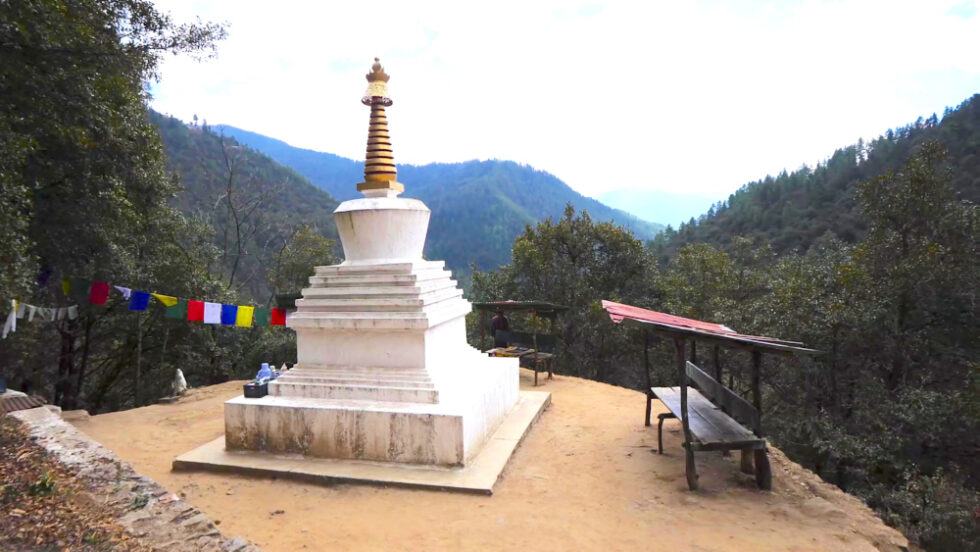
We reached another stupa, which is the halfway mark of the hike. I could see the monastery in the distance. You can relax there and catch your breath. You should definitely be in shape before you visit Bhutan if you want to see the monasteries! You should also wear comfortable shoes and a wool sweater!
We made it to the monastery within 45 minutes of beginning our Buddhist monastery hike just outside of Thimphu, Bhutan! We passed prayer flags and would head up to another stupa to get a view of it. Along the way, I met a cute baby goat!
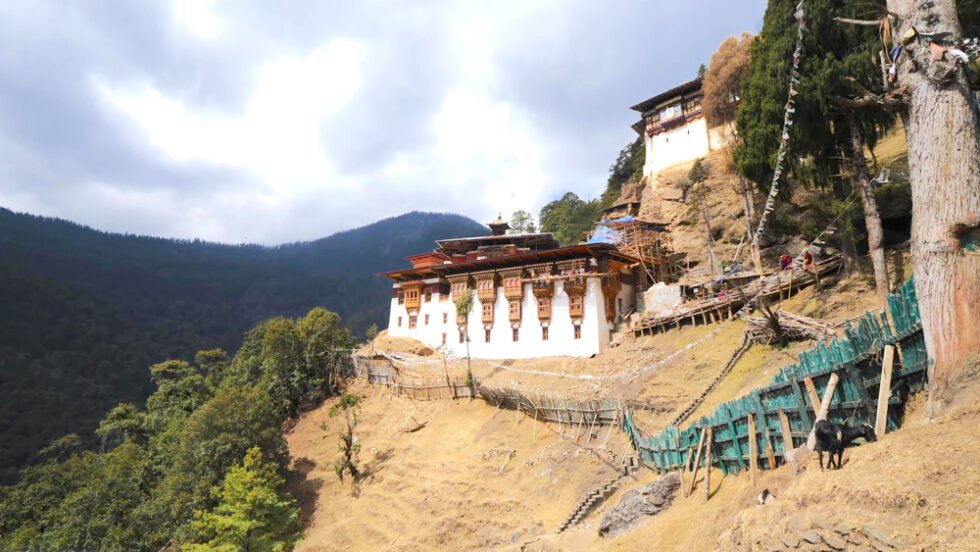
The monastery was under renovation. In the area, there’s a small hut that’s used as a meditation house. After the monks complete 9 years of higher studies, they do 3 years of meditation. During the meditation, they are not able to see or talk to anyone for 3 years, 3 months, 3 weeks, and 3 days. But there is a month where families can meet with the meditators.
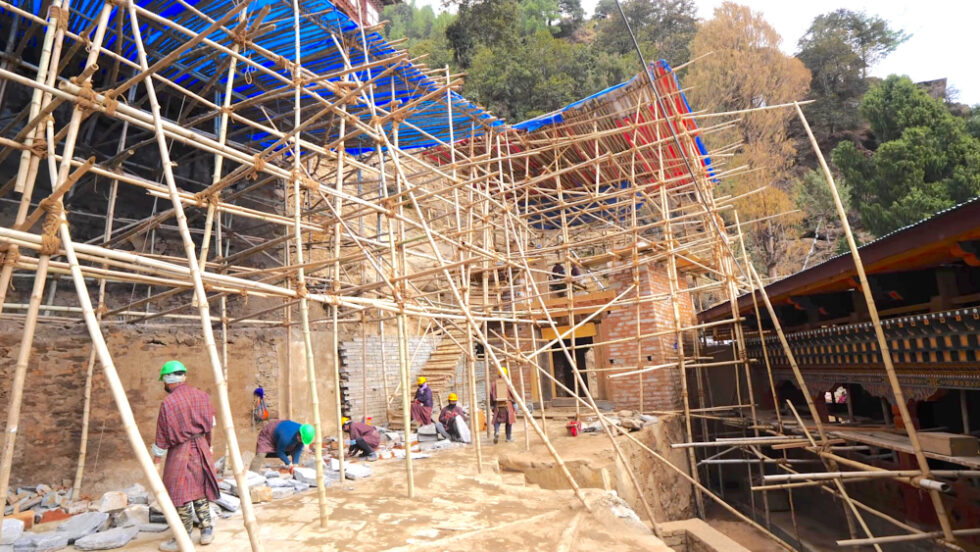
You can’t film in the temple, but you can film the amazing views over the valley! There were also some mountain goats to the right, different from the one I saw earlier. In the distance, nestled in the valley, is the university for the monks!
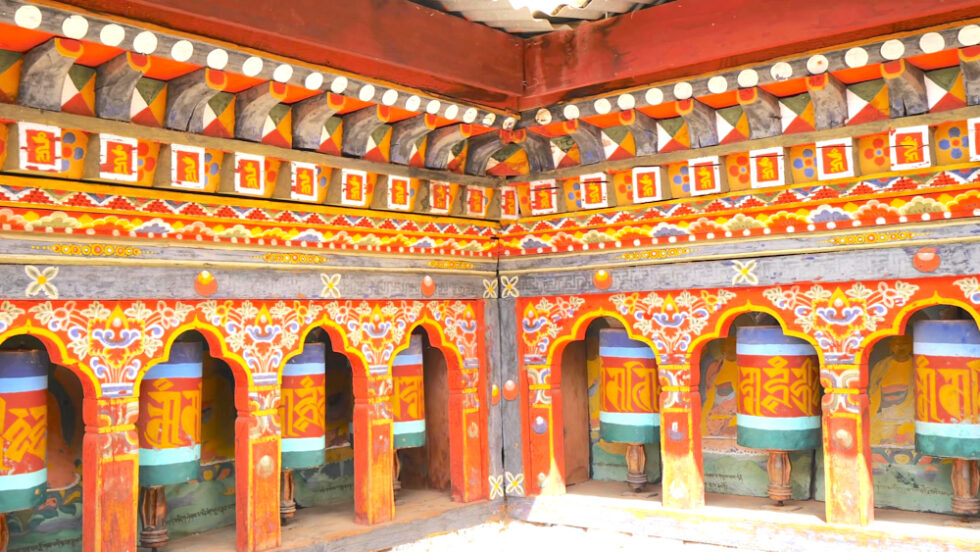
We continued toward the rooms for the monks. They were beautiful! There are 108 prayer wheels there. I loved how the monastery was built into the mountain. Then, we reached a point where we could no longer talk, as there were tsampas meditating. The staircase to go up was very steep. From the top, we could see the roof of the meditation hut, which has a golden tower on top.
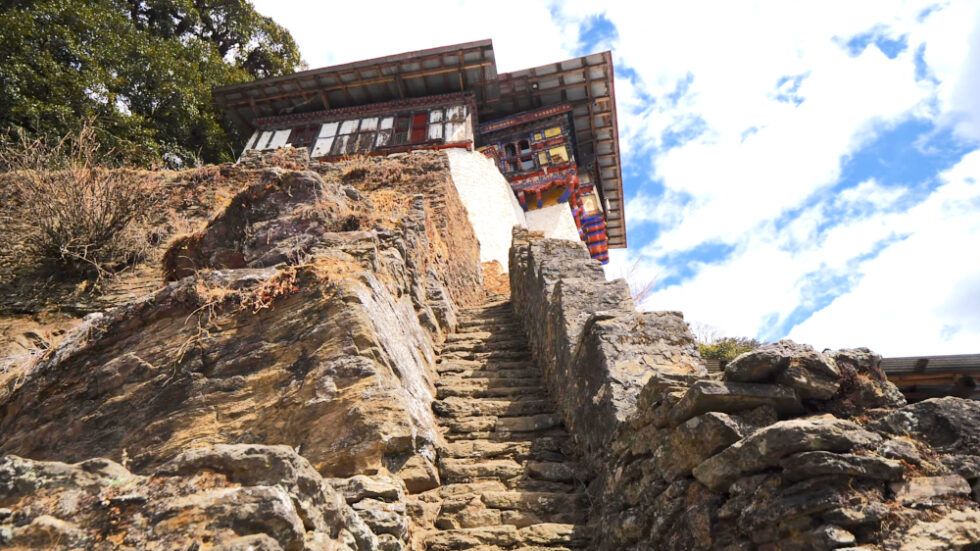
Inside the building at the very top is where Ngawang Namgyal, the unifier, meditated for three years, three months, three weeks, and three days. Tsheten and I relaxed there for a while and admired the beautiful view of the valley and river far below, the university for the monks, the meditation huts, and the monastery. It was such an amazing reward for hiking up the mountain!
There are some nicer, 3-story meditation huts nearby. They can accommodate lots of meditators, while the smaller ones can accommodate only one.
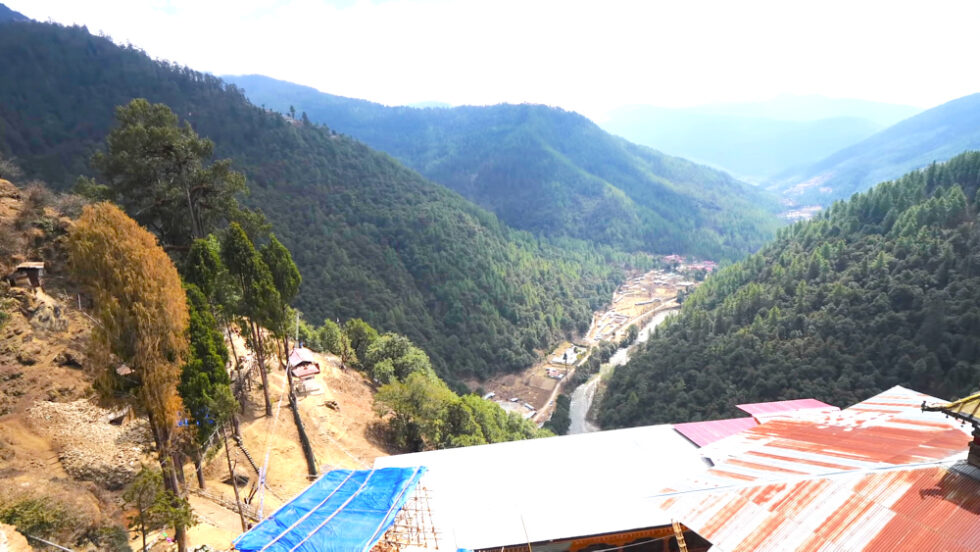
Then, we made our way back down the mountain. We didn’t go back the same way we came and took a dirt staircase down. It only took 15 minutes! I was already hungry and ready to have lunch! We passed some donkeys and the first stupa we’d passed earlier. From there, we’d drive 3 minutes to a spot along the river for a Bhutanese picnic lunch. I couldn’t wait to eat some ema dashti—some chilies with cheese!
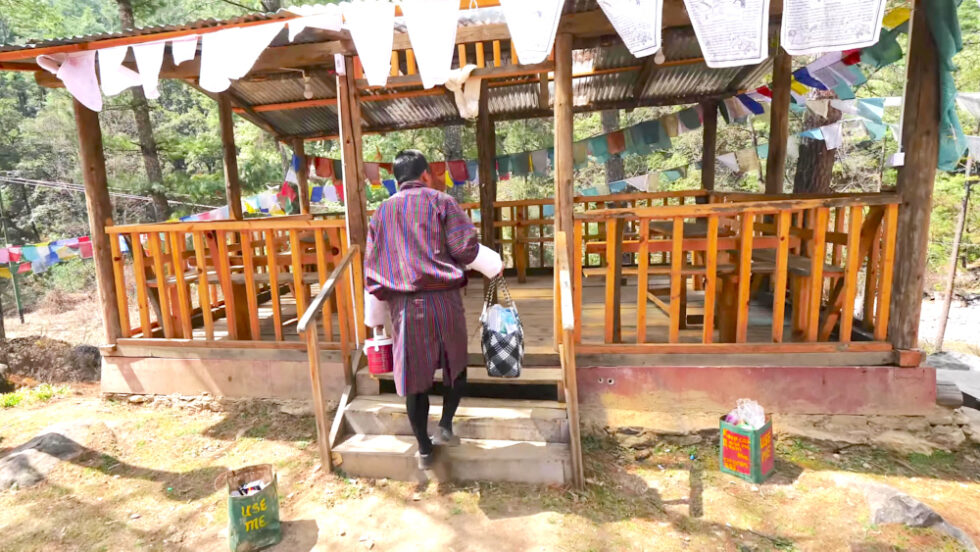
We arrived at a small stupa with a little, covered picnic area by the river. It was super relaxing and had prayer flags fluttering in the wind all around. It was such an awesome place for a picnic! We got some rice, ema dashti made from Indian chilies, cabbage, dried beef with squash and chilies, wet beef, and beans. I used some hand sanitizer and dug in with my hands for a more traditional feel.
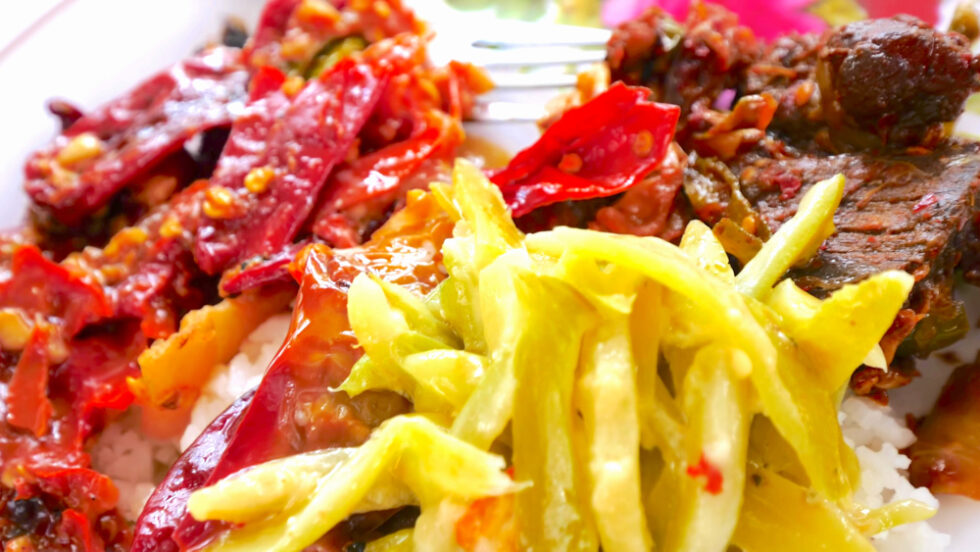
The beans were light and creamy and the dry red chilies were great but not spicy. Then, I went for the dried beef, which was dry but a little moist on the outside, almost like beef jerky. The wet beef with chilies was a little too tender for me. Then, I went for more of the ema dashti, which also contained turnip. It wasn’t hot at all at first but I started feeling it a little bit later. But it was nowhere near as hot as breakfast! Everything was super moist and tasty. The vegetables in Bhutan are incredible! The best vegetable is the red chili!
You also don’t have to eat the beef. You can just have veg, the Indian way! But the red chilies with the dried beef was the best! This crazy spicy Bhutanese food and Buddhist monastery hike in Thimphu, Bhutan was such a great way to kick off my day!
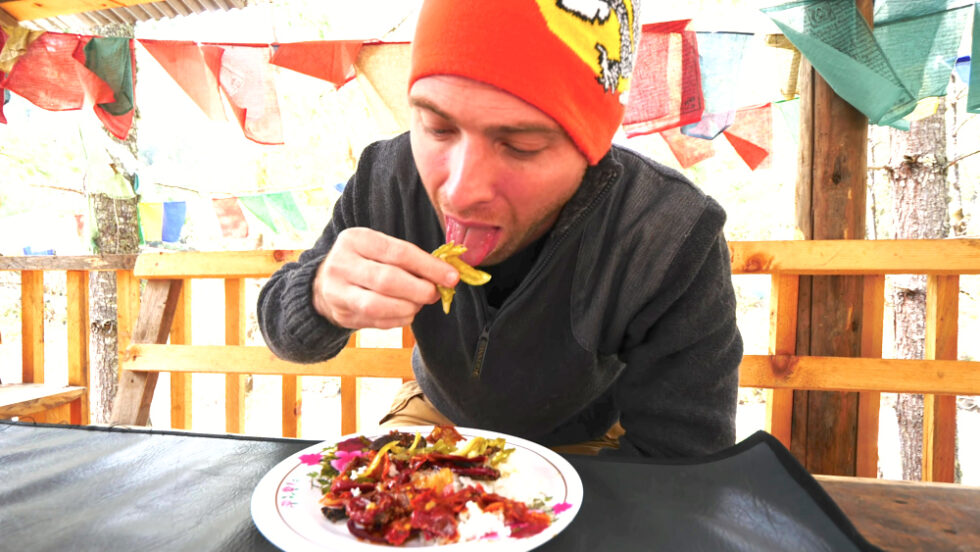
I hope you enjoyed coming with me to have more delicious and spicy Bhutanese food before and after my Buddhist monastery hike in Thimphu, Bhutan! If you did, please give this video a thumbs up and leave me a comment below. Also, please subscribe to my YouTube channel and click the notification bell so you don’t miss any of my travel/food adventures around the world!
Counter
101 Countries • 1432 Cities